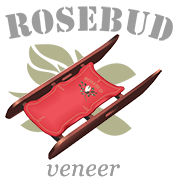While high-tech building materials may get all the glory and hype, there’s still nothing quite as warm and welcoming as wood. The natural and renewable building block has been used throughout human history to craft everything from simple structures to ornate architecture.
But with this year’s loss of over 20 million trees in over 250 thousand acres of forest from the devastating California wildfires, Los Angeles Times has stated that “prices of raw wood and wood materials have skyrocketed more than ever before in the state.”
According to CALIFORNIA’S CHANGING ENVIRONMENTAL REGULATIONS, a study that focused on the effects of changing forest practice regulations [external link] on timber harvest planning and preparation costs, California’s plywood and veneer production facilities declined from 26 to only 2.
This has driven more and more companies, mill workers, and architects alike in Los Angeles and surrounding areas to begin importing wood veneers from other states where prices are much more affordable. Rosebud Veneer is one major supplier that many in the Los Angeles area have been importing luxury wood veneers from due to their affordable prices and exceptional quality of their exotic and unique woods.
With already more than 30 years’ experience in the industry, the 2-ply and raw wood veneer supplier based out of Louisville, Kentucky has grown in popularity not only in Los Angeles, but in other major cities such as New York and Chicago as well. But why choose wood veneer over solid wood?
Earth Friendly
Earth Friendly – Veneer reduces the harvest of both common and exotic woods. The milling process of hardwood veneer in and of itself reduces waste. Solid wood timber is typically sawn into 1? thick boards. The saw cuts a kerf between boards 1/16? to 1/4? thick that winds up as sawdust. Veneer on the other hand is not cut from the log but is sliced with a knife into leaves or sheets. That produces 42 veneer surfaces for every one that is gotten from a board and with no wasted wood that ends up as sawdust where the saw blade would have gone. That’s over 42 surfaces of wood veneer for every one of solid wood, thereby increasing usable surface area substantially and reducing the demand for solid wood. Additionally, over time and under changing environmental conditions (temperature and humidity) many solid woods are prone to warping and cracking, prompting the replacement of solid wood pieces, fueling the demand for more solid wood. Stable substrates with wood veneer surfaces are not subject to the same elements over time. The substrates used beneath veneer offer an added benefit to smart forestry practices as well. Plywood and medium density fiberboard are made from younger and lower quality trees that are timbered out of stands where the remaining trees will grow faster and better due to less competition for sunlight and nutrients.
Consumer Friendly
Veneer affords the opportunity for people to have furniture made from woods that would otherwise be impossible due to rarity or the nature of the wood itself or the project for which it is used. The beauty and versatility of wood veneer offers cuts such as burls and crotches which are structurally unsound in solid form but are highly desirable when placed on a stable substrate. Many beautiful woods can rarely be utilized and appreciated unless they’re used as veneer.
Because veneer is so thin and is glued to a stable substrate it allows matching of designs and arrangements of the wood that would be impossible to achieve in solid woods. Solid wood, even kiln-dried, expands in warm weather and contracts in cold. Intricate designs and patterns would be impossible in solid lumber because the seams would open in winter and swell and buckle in summer. Cross grain designs such as aprons and edge bandings are also impossible in solids. Solid burls are also largely unusable in solids but common in wood veneer.
Amidst the growing concern of deforestation and forest wildfires, many consumers may be reluctant to add to the demand for solid hardwoods, especially exotics. Wood veneer offers consumers a more earth-friendly compromise and functional benefits that are good for both. With good forestry and timbering practices, wood is one of the few truly renewable resources. Veneer versus solid wood is smart for the environment and the consumer.
Rosebud Veneer knows that wood veneer by design results in superior products and extends the uses of natural woods in a manner which requires significantly less wood fiber than that of solid wood lumber, thereby reducing the demand for natural wood resources.
Prices and the effects of deforestation and wildfires are of a growing concern among consumers, environmentalists, and industry alike. The availability of common solid woods and exotics is decreasing yet the demand remains high for consumers who love the look and feel of natural wood products. Wood veneer is by far the most logical and more ecologically friendly alternative to solid hardwoods.
Rosebud Veneer believes that the use of wood veneer versus solid wood is a smart practice in sustaining environmental resources for future generation. They continually look for new and innovative applications in which veneer can be used in place of solid woods and provide the look and longevity traditionally associated with solid woods.
